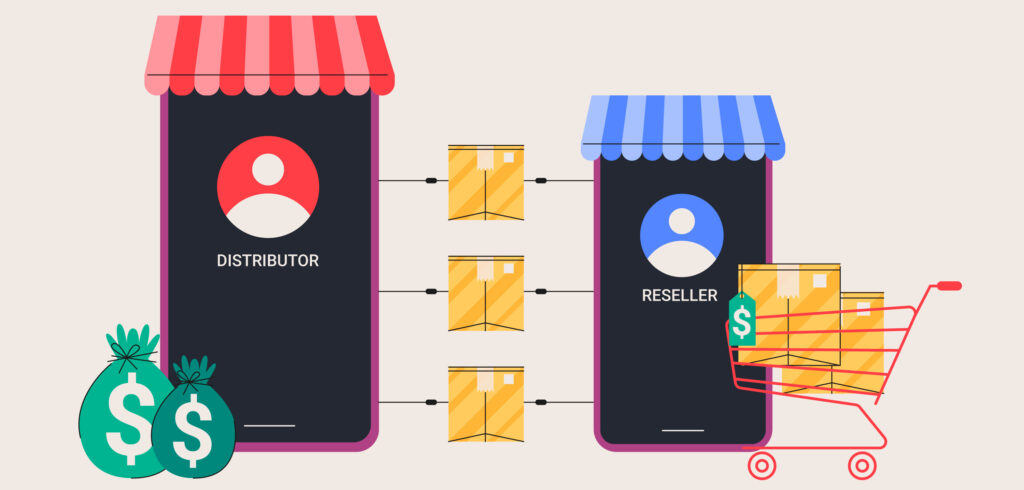Instead of a traditional online store where a single brand sells its products or services, a multivendor marketplace is a platform that hosts numerous vendors, each with their unique product offerings. This model creates an expansive and diverse online shopping environment that caters to a wide variety of consumer needs and wants.
The concept of a multivendor marketplace taps into the profitability aspect of vendor diversity. In this setup, consumers can find virtually everything they need in one place, making the platform a convenient shopping destination. This wide-ranging product offering, coupled with the competitive pricing inherent in a multi-vendor marketplace, drives significant traffic to the platform, subsequently increasing sales and profitability.
What is Vendor Diversity?
Vendor diversity, also referred to as supplier diversity, is a proactive business strategy that advocates for the inclusion of diverse-owned and traditionally underserved businesses in the supply chain. In the context of a multivendor marketplace, vendor diversity implies having an assortment of vendors from different backgrounds and with unique selling propositions. This could involve vendors of different sizes, from various geographical locations, or belonging to traditionally marginalized communities.
Having a diverse vendor base in a multi-vendor marketplace adds value by providing a wide array of products and services to cater to the varied requirements of customers. It also fosters healthy competition, ensuring competitive pricing and constant innovation. Moreover, it contributes to economic growth by providing equal market opportunities to all vendors.

Vendor diversity in a multivendor marketplace promotes inclusivity and sustainability in the e-commerce landscape. It’s not just about having different vendors; it’s about embracing diversity in its entirety, thereby creating a balanced, equitable, and thriving marketplace. It enhances the marketplace’s appeal to a broader customer base, mitigates risks associated with dependence on a single vendor, and fosters a sense of community among vendors and customers.
Benefits of Vendor Diversity
- Wider Product Range: Vendor diversity facilitates an extensive product range, catering to various consumer needs. With vendors varying in size, location, and community, the variety of products offered is immense. This broad range of products not only enriches the consumer’s shopping experience but also increases the marketplace’s appeal.
- Attracting a Broader Customer Base: A diverse vendor base attracts a broader customer base. Different vendors cater to different market segments, thus inviting a wider audience. Moreover, by engaging vendors from traditionally marginalized communities, marketplaces can also cater to these often-ignored segments, fostering inclusivity and enhancing their customer base.
- Reducing Dependency on a Single Vendor: Another significant advantage is the reduction of dependency on a single vendor. With multiple vendors, the risk of supply chain disruption is minimized as the availability of alternatives ensures a steady supply of products and services. This mitigates potential risks associated with single-vendor dependency, ensuring smooth operations.
- Promoting Healthy Competition: Vendor diversity promotes healthy competition among suppliers, leading to improved product quality and innovation. This competition can lead to more competitive pricing, benefiting consumers, and stimulating business growth.
- Economic Growth and Sustainability: Vendor diversity contributes to economic growth by engaging a vast network of suppliers, each contributing to the economy. Moreover, by engaging vendors from marginalized communities, also promotes economic equality and sustainability.
Measuring the Profitability of Vendor Diversity
Measuring the profitability of vendor diversity in ecommerce marketplaces involves several key performance indicators (KPIs). These KPIs provide valuable insights into the performance and growth of an e-commerce platform, allowing businesses to make data-driven decisions and optimize their strategies.
- Revenue Growth: This KPI measures the increase in a company’s sales over time. A clear indicator of the success of vendor diversity would be a steady or rapid increase in revenue, indicating that the range of products and services on offer is attracting a broader customer base.
- Customer Retention Rate: Customer retention rate is a measure of how many customers a business retains over a given period. A diverse vendor base can improve customer retention by offering a variety of products and services, thus reducing the likelihood of customers seeking alternatives elsewhere. This can be calculated using the formula [(E-N)/S] x 100 = CRR, where E is the number of customers at the end of a period, N is the number of new customers acquired during that period, and S is the number of customers at the start of the period.
- Market Share: This KPI measures the percentage of an industry’s total sales that is earned by a particular company. An increase in market share can indicate the success of vendor diversity, as it suggests that the marketplace is becoming more popular with consumers and outperforming its competitors.
- Seller Conversion Rate: This refers to the percentage of potential sellers who become active sellers on the marketplace. A higher seller conversion rate can suggest that the platform is successful in attracting and retaining diverse vendors.
- Average Order Value (AOV): This KPI measures the average of every order placed over a certain period of time. A higher AOV indicates that customers are purchasing more per visit, which can be a sign of the appeal of a diverse range of products.
- Gross Merchandise Value (GMV): GMV is the total value of merchandise sold over a certain time period. A higher GMV suggests a successful marketplace with a large and diverse vendor base.
- Seller Satisfaction Score: This metric measures how satisfied vendors are with the marketplace. A higher seller satisfaction score can indicate that vendors value the opportunity to reach a diverse customer base.

Strategies for Implementing Vendor Diversity
Vendor diversity is an indispensable strategy for a thriving e-commerce marketplace. It not only enriches the product offerings but also strengthens the platform’s competitiveness and resilience. Implementing vendor diversity requires careful vendor selection and effective vendor management.
Vendor Selection
The first step towards implementing vendor diversity involves selecting vendors that align with the marketplace’s goals and target market. Here are a few criteria for vendor selection:
Product or Service Quality: The quality of products or services offered by a vendor is paramount. Quality directly impacts customer satisfaction and retention, making it a crucial factor in vendor selection.
Vendor Reputation: A vendor’s reputation, based on their reliability, customer service, and ethical practices, should be taken into account. Choosing reputable vendors enhances the marketplace’s credibility and trustworthiness.
Unique Selling Proposition: Vendors should offer something unique, whether it’s a product, service, or approach to customer service. This uniqueness can help the marketplace stand out and attract a diverse customer base.
Alignment with Target Market: Vendors should align with the marketplace’s target market. Their offerings should cater to the needs, preferences, and expectations of the target customer base.
Vendor diversity should resonate with the diversity of the target market. A diverse vendor base can cater to a diverse customer base, leading to increased customer satisfaction and loyalty.
Vendor Management
Effectively managing a diverse vendor base is crucial to realize the benefits of vendor diversity. Here are some tips for vendor management:
Clear Communication: Clear and open communication is key to successful vendor management. Clearly articulate your expectations, feedback, and any changes in policies or procedures.
Vendor Performance Monitoring: Regularly monitor vendor performance against established KPIs. This helps identify any areas of concern early and take necessary corrective actions.
Building Strong Relationships: Cultivate strong, mutually beneficial relationships with vendors. A good relationship can lead to better terms, improved service, and increased collaboration.
Continuous Improvement: Encourage vendors to continuously improve their products, services, and processes. This not only enhances their performance but also contributes to the overall success of the marketplace.
Conclusion
In conclusion, vendor diversity in a multi-vendor marketplace is not just a profitable strategy, but a crucial aspect that drives growth, customer retention, and sustainability in the ecommerce industry. It offers a diverse product portfolio, thereby attracting a wide customer base while fostering healthy competition. Moreover, it significantly contributes to the economic growth and sustainability of the marketplace. Entrepreneurs seeking to maximize profitability should consider this compelling strategy as a fundamental element of their ecommerce model.
For businesses looking to embrace this trend, Appscrip’s Multi-vendor Ecommerce app development solutions offer the perfect platform. With our robust features and seamless solutions integration, we can help you create a diverse and thriving marketplace that resonates with today’s customer expectations. Contact Appscrip today and get started on your journey toward a profitable and diverse ecommerce marketplace.










